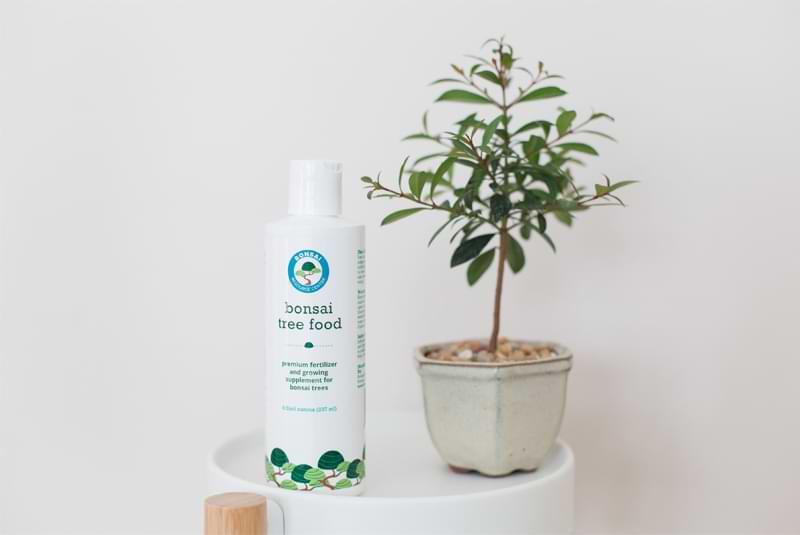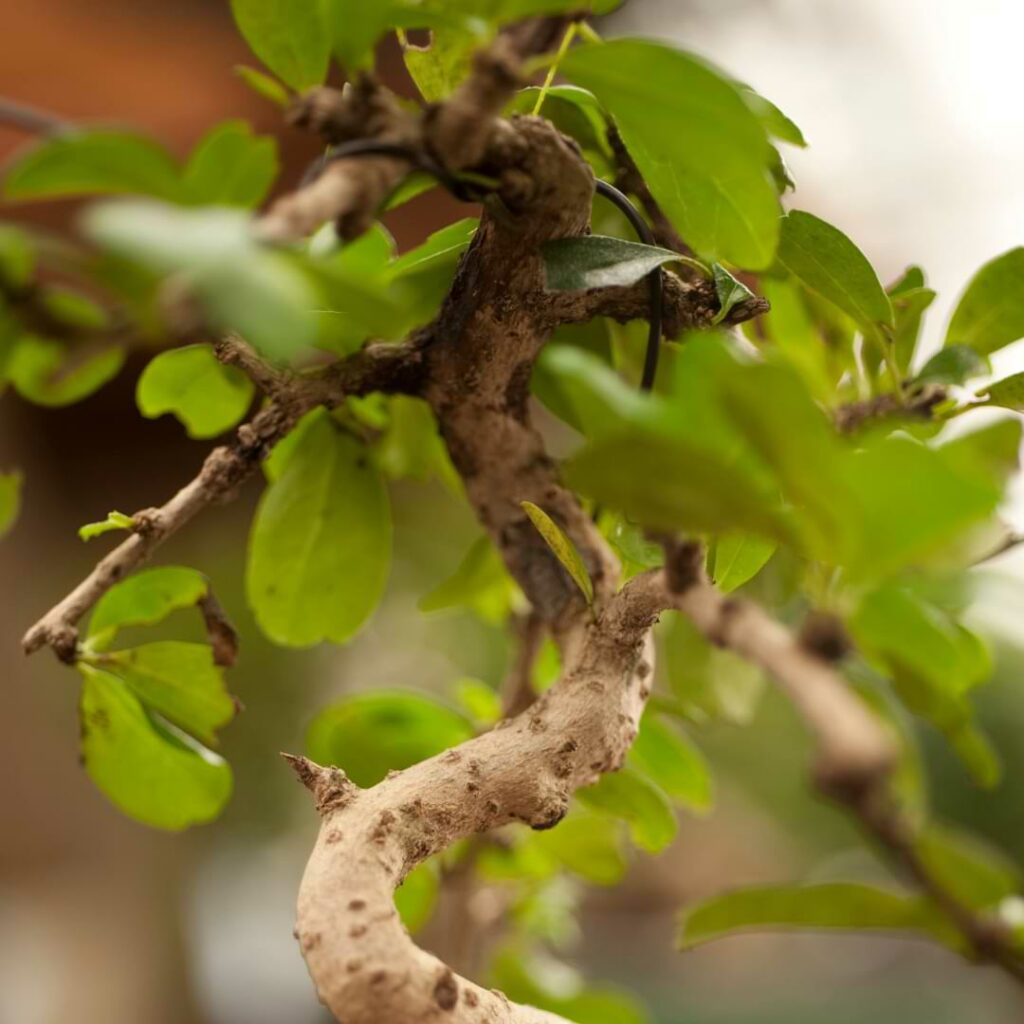Fukien tea bonsai (Carmona bonsai) is a beautiful and popular type of bonsai tree native to the Fukien Province in China. This species of tree is known for its small, delicate leaves and branches, and is often used in bonsai displays and competitions. They also make great gifts for plant lovers.
Fukien tea bonsai (Carmona bonsai) is a type of miniature tree that is often used in bonsai. It is native to Fujian Province in China and gets its name from the Fukien region. The Fukien tea tree is an evergreen that can grow to be about three feet tall. It has small, dark green leaves and white flowers that bloom in the spring.
If you’re thinking about growing your own fukien tea bonsai, keep reading to learn more about caring for this amazing bonsai tree and how to help it thrive.
Why Fukien Tea Makes a Good Bonsai
Fukien tea makes a good bonsai because it is easy to care for and can be shaped into different styles, making it perfect for this delicate art. It is a naturally small tree, so using it for bonsai is easy, and it is one of the more common choices among people who collect and grow bonsai trees.
It’s also an excellent bonsai tree because of the beautiful flowers it produces in the early summer. Many people love the fact that this tree will give their space that pop of color at the beginning of the season.
Carmona Bonsai Tree Care
There are several important factors that go into how you should care for your Carmona bonsai tree. You’ll need the proper soil that is going to give your tree all the nutrients it needs to remain strong, as well as a good watering schedule, the right placement inside or outside of your home, and so much more. Read on for a comprehensive care guide that will keep your Fukien tea bonsai happy.
Soil
Carmona bonsai trees prefer a slightly acidic soil that has plenty of organic matter and is well-draining. A pre-made potting mix that is specifically formulated for bonsai trees would be ideal for your carmona bonsai. This ensures that your plant gets all the nutrients it needs to thrive, and that it grows strong with a solid root system.
Position & Temperature
Fukien tea bonsai thrive in warm climates and prefer a sunny position. They can tolerate some shade, but will not produce as many flowers if grown in too much shade. These bonsai are evergreen and can be kept outdoors all year round in areas with mild winters.
Fukien tea bonsai are quite tolerant and can withstand both hot and cold temperatures. However, they will not tolerate prolonged periods of freezing weather. If you live in an area with very cold winters, it is best to bring your Fukien tea bonsai indoors or place it in a greenhouse over winter.
They are happiest where they can be kept between 60 and 80 degrees Fahrenheit, and where they get a decent amount of sunlight. Just don’t let their leaves get scorched with too much direct afternoon sun. Keep this temperature range in mind if you are planning to grow your bonsai tree outside.
Indoor or Outdoor Growing
Fukien tea bonsai (Carmona Bonsai) are tropical evergreen trees that can be grown either indoors or outdoors. Fukien tea bonsais prefer bright, indirect sunlight and humid conditions, so if you live in a dry climate, you may need to mist your Fukien tea bonsai daily to prevent the leaves from drying out and turning brown. You can also use a humidity tray that will naturally increase the humidity directly around your tree.
Fukien tea bonsais can be sensitive to changes in temperature and humidity, so it’s important to acclimate them slowly to new conditions. When moving your Fukien tea bonsai from indoors to outdoors (or vice versa), do so gradually over the course of a week or two.
When grown indoors, Fukien tea bonsais should be placed in an east- or south-facing window. If possible, maintain a consistent temperature around the tree of 70-80 degrees Fahrenheit. Make sure not to let the temperature inside drop below 60 degrees, or consider adding a portable space heater close to your plant to keep the temperature a bit warmer for your tree.
Water
Watering your Fukien tea bonsai is critical to its health and appearance. The tree is native to tropical and subtropical regions and thrives in high humidity. It prefers evenly moist soil and will drop leaves if the soil becomes too dry.
During the growing season, water your bonsai daily or as needed to keep the soil moist but not soggy. Allow the top layer of soil to dry out slightly between waterings. Reduce watering during the winter months, only watering enough to keep the root ball from drying out completely.
Fukien tea trees are sensitive to fluoride, so use filtered or distilled water if your tap water is high in fluoride. You can also leach fluoride from tap water by boiling it for 15 minutes and then allowing it to cool before using.


Fertilizing
It’s very important to use a fertilizer that is low in nitrogen for your fukien tea bonsai. This is because too much nitrogen can cause the leaves of the tree to become large and floppy. A good rule of thumb is to use a fertilizer or a plant food that is specifically formulated for bonsai trees, as it would have the ideal amount of each nutrient your tree will need.
Fertilize your Fukien tea bonsai every two weeks during the growing season (spring and summer), and then once a month during the fall and winter. If you decide to go with an bonsai tree food, you don’t have to worry about when to fertilize your plant, as your plant will get the ideal amount of nutrients every time you water.
As always, be sure to read and follow all instructions on your fertilizer before using it on your bonsai tree.
Flowers
The flowers of the Fukien tea tree are small and white, with a strong fragrance. They typically appear in early summer, and last for about a week or two. Some lucky fukien tea bonsai owners can get their trees to flower for a few weeks each year. These flowers are followed by small, black berries that change the look of the tree entirely. This is one reason the carmona bonsai is one of the more popular bonsai tree choices.
You don’t need to do anything special with the flowers of this tree. The petals will simply fall off and what’s left on the tree will turn into small berries that are actually edible!
Re Potting
Re potting is a necessary part of maintaining your Fukien Tea Bonsai tree. It is recommended that you re pot every two to three years, or when the tree’s roots have outgrown its current pot.
When re potting, be sure to use a well-draining bonsai soil mix and a pot that is only slightly larger than the tree’s root ball. Gently remove the tree from its current pot and loosen any compacted roots with your fingers.
Position the tree in its new pot and backfill with new, well-draining bonsai tree potting mix, tamp down the soil and keep building up the soil level until it is just even with where the soil was previously. Don’t put soil all the way up to the trunk of the tree. Top the soil with the mulch or pebbles of your choice, again, keeping it from directly touching the trunk where the tree begins its root system.


Fukien Tea Bonsai Maintenance
Along with the care guide provided above, there is general maintenance that you will need to keep in mind to make sure your fukien tea bonsai tree is happy and healthy. This will ensure your plant lives for many years and provides you with tons of beautiful flowers every year. Here are some basic maintenance requirements for your fukien tea bonsai tree.
Pruning
Pruning your Fukien Tea Bonsai (Carmona microphylla) is an important part of caring for your tree. Proper pruning will promote healthy growth and can even help shape your tree into a desired shape.
There are a few things to keep in mind when pruning your Fukien Tea Bonsai:
-First, always use clean, sharp pruning tools. This will help prevent infection and disease.
-Second, avoid pruning too much at once. Prune a little bit at a time, so that your tree can adjust to the changes.
-Third, be careful not to damage the bark or leaves of your tree while pruning.
Additionally, here are some general tips for pruning your Fukien Tea Bonsai:
-Trim back new growth to encourage bushier growth.
-Prune off any dead or dying branches.
-Thin out dense areas of growth to improve air circulation and light penetration.
Training
Fukien tea bonsai trees can be trained in a variety of styles, including formal upright, informal upright, slanting, cascade, literati, and root-over-rock. There are many ways to train your tree traditionally, or you can simply go with what looks good to you.
As with all bonsai trees, the best way to learn how to train your Fukien tea bonsai is through trial and error. Start by experimenting with different techniques and find what works best for you and your tree. Some of the more common ways to train your bonsai are through proper pruning and by using wire to hold the branches in a specific way.
Wiring
The easiest way to train your bonsai tree is by using training wire specifically for bonsai trees. To do this, you will need a high-quality training wire. You can wrap your tree with a natural barrier like raffia to prevent any damage that the wire might cause, but for pliable branches, that shouldn’t really be necessary. Simply wrap the wire around the new branches and ease the branch into the desired shape. The wire should hold the shape, and once the branch matures a bit more, it will hold that shape forever.
You can remove the training wire after a month or two. Keep a close eye on your tree during this time to ensure the tree isn’t growing around the wire. This could cause permanent damage to your tree. When removing the wire, cut it at every turn to remove it. Do not attempt to unbend the wire around the branch that it is on, as this could damage your tree.
Fukien Tea Bonsai FAQ
What is the lifespan of a Fukien tea bonsai?
The average lifespan of a Fukien tea bonsai tree is about 20 years. However, with proper care and attention, these trees can live much longer – some for hundreds of years. The key to a long and healthy life for your Fukien tea bonsai is regular pruning and shaping, as well as providing the tree with the right amount of water, sunlight, and nutrients.
Why is my Fukien tea bonsai losing leaves?
There are many reasons your Fukien tea bonsai may lose its leaves. It could be because of improper watering, too much or too little sunlight, nutrient deficiencies, or pests/diseases. If you’re not sure what is causing the problem, it’s best to consult with a professional bonsai grower or tree care expert.
Final Thoughts: Fukien Tea Bonsai Tree Care
Fukien tea bonsai trees are one of the more common bonsai tree varieties, and for good reason. They’re relatively easy to care for, they live a long life, and they are simply beautiful. They make the perfect bonsai tree for any person, from beginner bonsai owners to advanced, and are easy to shape into your desired shape.
Just remember to give your carmona bonsai the right nutrients, sunlight, and the right amount of water, and your tree will continue to reward you with beautiful growth, flowers, and even berries for many years to come.
Bonsai With Us!
The Bonsai Resource Center is here to help you learn how to grow bonsai and provide you with the tools you need to keep your tree healthy and strong. Explore our other articles, visit our online shop, and connect with other bonsai lovers in our Facebook group to learn everything you need to know about this rewarding hobby!






